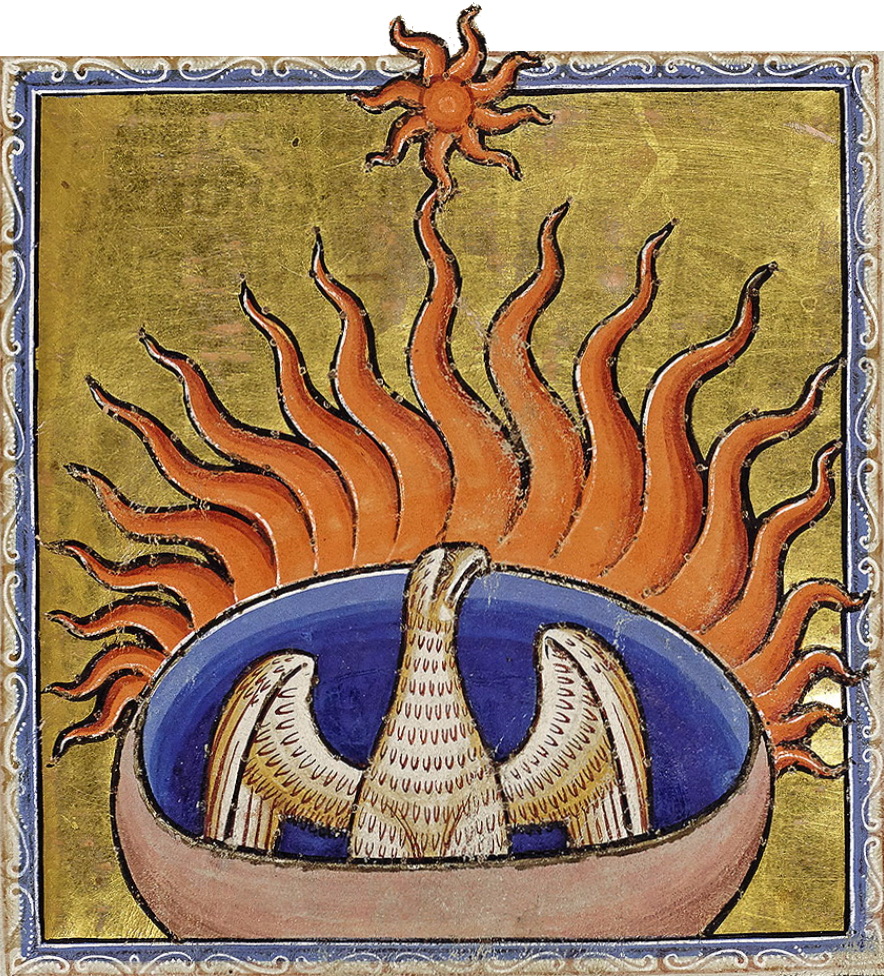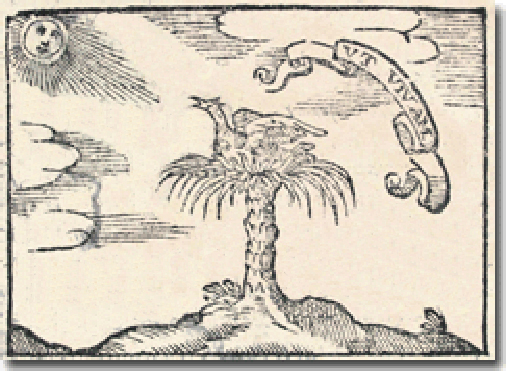Ancient Psychedelia: Alien Gods & Mushroom Goddesses
Online Book - Chapter 11, Page 226
Back to Online Book Mainpage / Next Page (Chapter 11, Page 227)
| The phoenix may have been a more modern attempt to link the bird or sky goddess with the sun, as was done in the later Egyptian and Greek periods. I did find this, from Jewish sources: “Although reference to the phoenix bird (also known as the firebird) does not show up by name in the KJV Bible translation, it does show up in a Jewish translation of the Old Testament. It also shows up in the Septuagint (a Greek version of the Old Testament dated to the 3rd century BC), Vulgate (Latin version of Scripture compiled by Jerome in the 4th century), and some Bible commentaries for Job 29:18. The Hebrew word khole (Strong's Concordance #H2344), translated as “sand” in the KJV, is interpreted as referring to the phoenix bird in the Jewish Publication Society Bible and other sources: “Then I said: ‘I shall die with my nest, and I shall multiply my days as the phoenix’ (279) “Then I thought: With my nest I shall expire, And, like the phoenix, have a long life.” (280) Quoting Herodotus, in Histories: “There is another holy bird, called the Phoenix, which I have never seen but in pictures. He rarely appears in Egypt — only once in every 500 years, so they say, in Heliopolis — and he is supposed to come when his father dies. If the painter describes him truly, his plumage is part golden and part red, and he is very like an eagle in shape and size. They say that this bird comes from Arabia, bringing the body of his father embalmed in myrrh to the temple of the sun, and there he buries him. First, he molds an egg of myrrh; then he puts his father in the middle of it. Lastly, he covers up the body with myrrh. This is what they say this bird does. But I do not believe them.” (281) Next, Pliny, in Natural History, gives us another vivid description of a creature, which if truly existed, has eluded this historian completely: “Æthiopia and India, more especially, produce (9) birds of diversified plumage, and such as quite surpass all description. In the front rank of these is the phoenix, (10) that famous bird of Arabia; though I am not quite sure that its existence is not all a fable. It is said that there is only one in existence in the whole world, and that that one has not been seen very often. We are told that this bird is of the size of an eagle, (11) and has a brilliant golden plumage around the neck, while the rest of the body is of a purple colour; except the tail, which is azure, with long feathers intermingled of a roseate hue; the throat is adorned with a crest, and the head with a tuft of feathers. The first Roman who described this bird, and who has done so with the greatest exactness, was the senator Manilius, so famous for his learning; which he owed, too, to the instructions of no teacher. He tells us that no person has ever seen this bird eat, that in Arabia it is looked upon as sacred to the sun, that it lives five hundred and forty years, (12) that when it becomes old it builds a nest of cassia and sprigs of incense, which it fills with perfumes, and then lays its body down upon them to die; that from its bones and marrow there springs at first a sort of small worm, which in time changes into a little bird: that the first thing that it does is to perform the obsequies of its predecessor, and to carry the nest entire to the city of the Sun near Panchaia, (13) and there deposit it upon the altar of that divinity. |
“The same Manilius states also, that the revolution of the great year (14) is completed with the life of this bird, and that then a new cycle comes round again with the same characteristics as the former one, in the seasons and the appearance of the stars; and he says that this begins about mid-day of the day on which the sun enters the sign of Aries. He also tells us that when he wrote to the above effect, in the consulship (15) of P. Licinius and Cneius Cornelius, it was the two hundred and fifteenth year of the said revolution. Cornelius Valerianus says that the phoenix took its flight from Arabia into Egypt in the consulship (16) of Q. Plautius and Sextus Papinius. This bird was brought to Rome in the censorship of the Emperor Claudius, being the year from the building of the City, 800, and it was exposed to public view in the Comitium. (17) This fact is attested by the public Annals, but there is no one that doubts that it was a fictitious phoenix only.” (282) The earliest representation of the phoenix I have been able to track down so far is from the Aberdeen Bestiary (c. 1100-1200), showing a bird emerging from an egg of fire (74g). Another is from Sacra symbola, by Juan de Horozco y Covarrubias from 1601 (74f), both of which have minimal mushroom imagery, such as the shape of the wings or the tree it is perched atop.  (74g) The Aberdeen Bestiary c. 1100-1200  (74f) Juan de Horozco y Covarrubias, Sacra symbola (Agrigento) 1601 (279) Job 29:18, Jewish Publication Society Bible of 1917 (280) Keil and Delitzsch Commentary; http://www.biblestudy.org/bible-study-by-topic/mythical-animals-in-the-bible/phoenix.html (281) Herodotus in Histories Vol. 2 (282) The Phoenix, Pliny Natural History Book X, Chapter 2 |
Go Back to Page 225